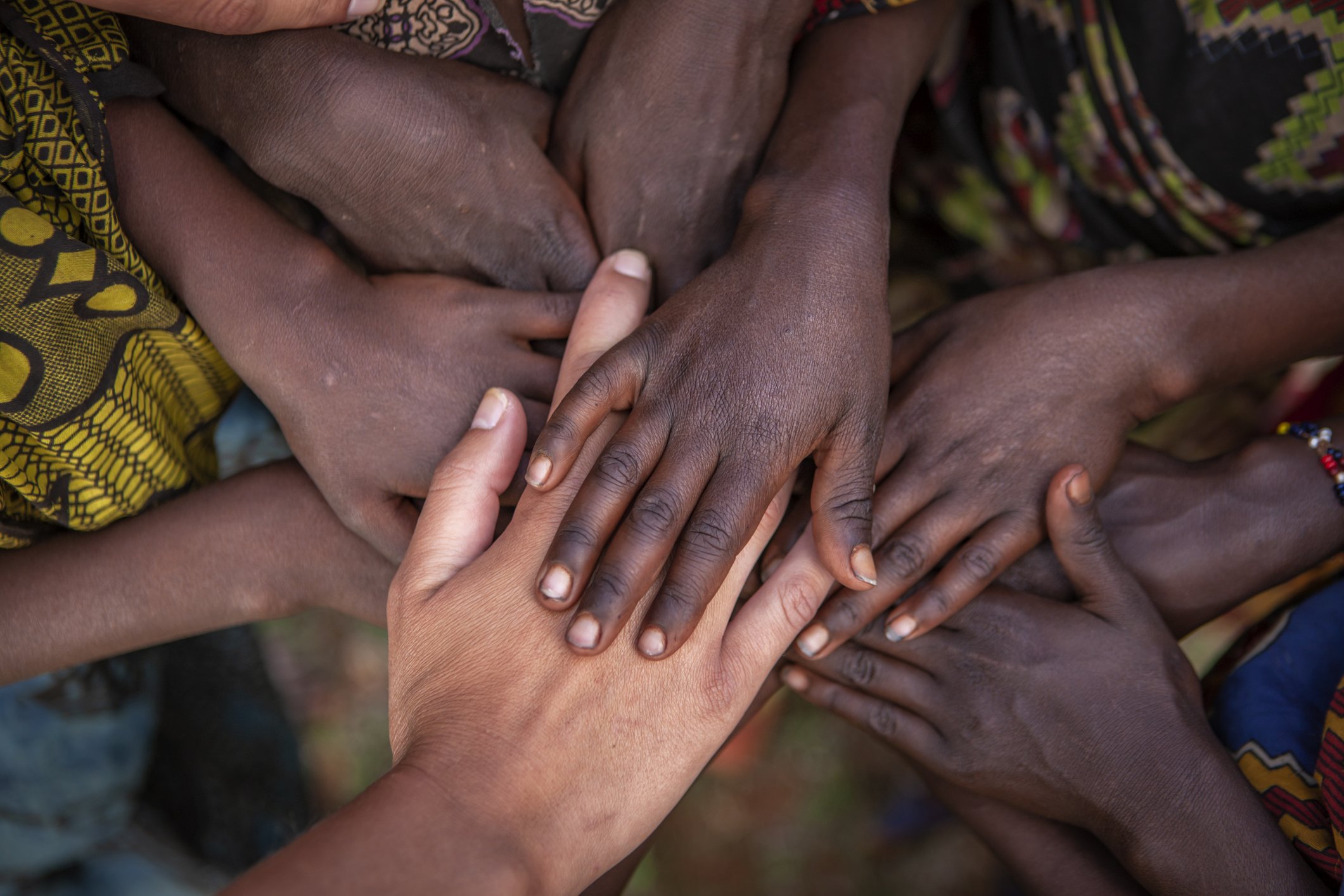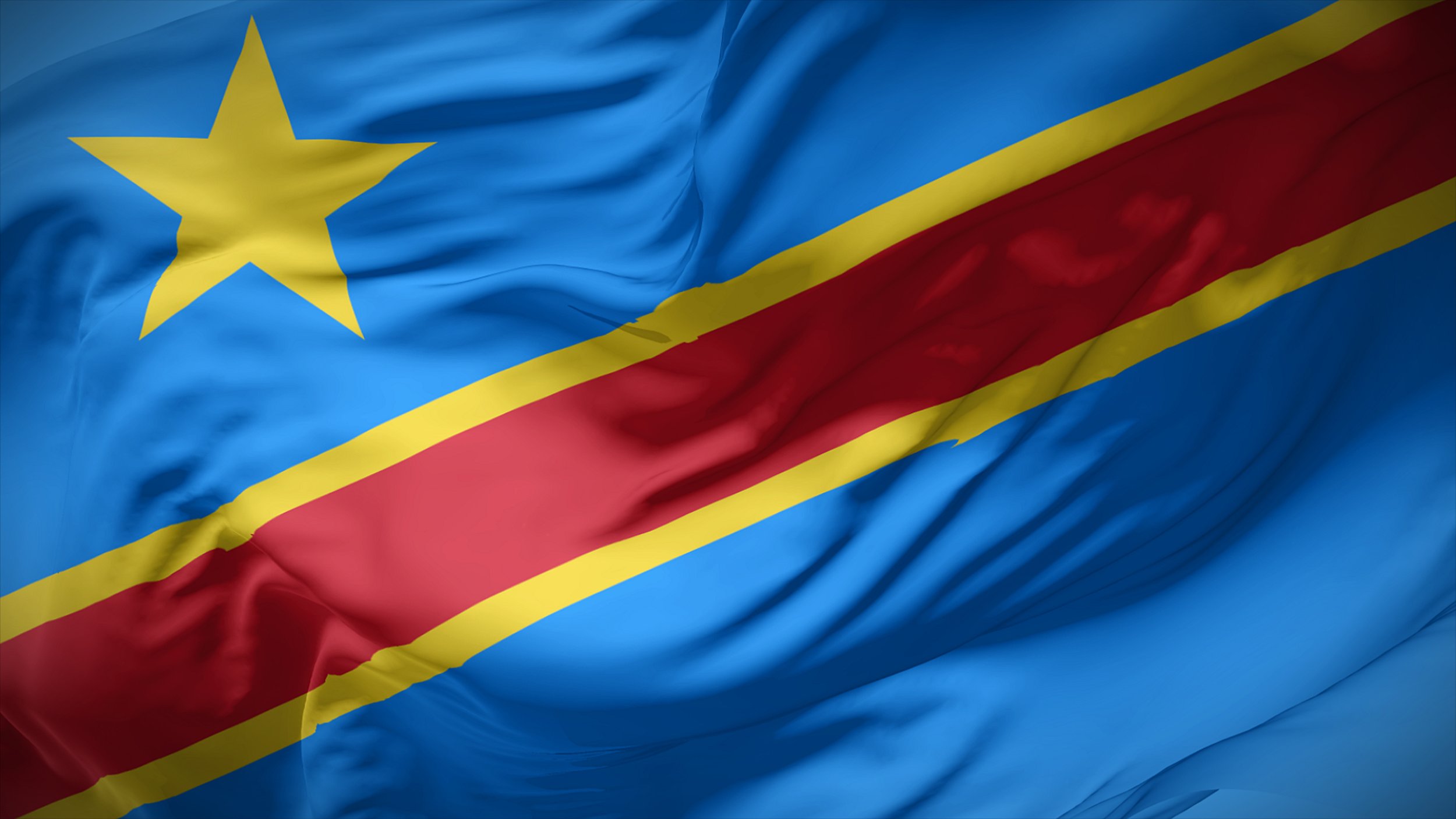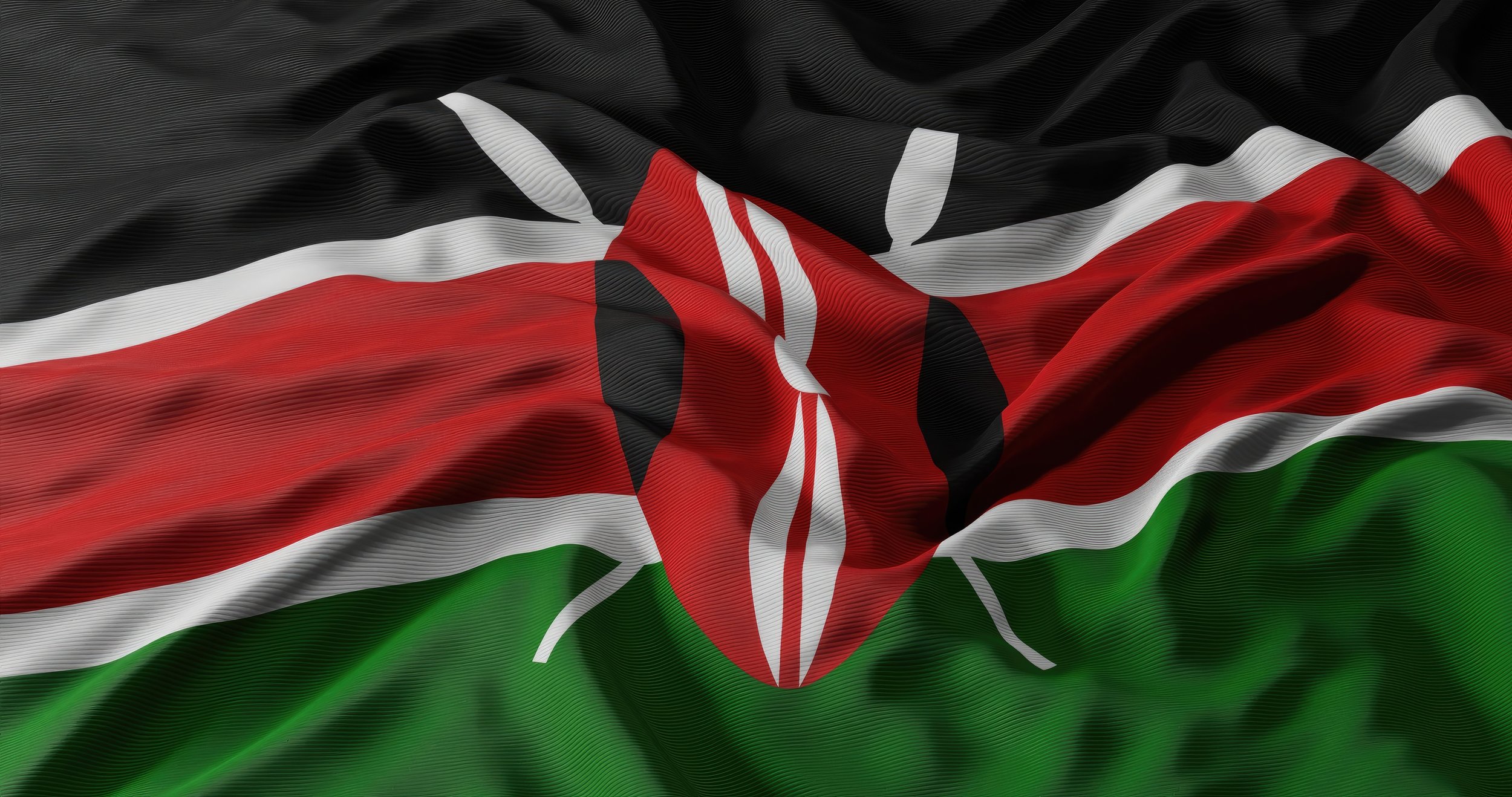
Intelligence

Africa’s Sectoral Potentials: Masco’s Overview
Africa, with its vast reserves of natural and human resources, stands on the brink of an economic transformation. The continent's diverse regions – West, South, and East Africa – each offer unique opportunities and face distinct challenges across key sectors: energy, agriculture, oil & gas, fintech, and minerals. This report provides an in-depth analysis from an analyst's perspective, exploring the current state, opportunities, and future outlook of these sectors. Through targeted investments and regulatory support, Africa can harness these opportunities to fuel sustainable growth and development.
The African continent, characterized by its rich cultural diversity and abundant resources, holds immense potential for development. This report aims to dissect the prospects within energy, agriculture, oil & gas, fintech, and minerals, shedding light on how West, South, and East Africa are positioned within these sectors. It examines the intricacies of each region, identifying trends, challenges, and pathways to leverage their full potential.
Fintech
Fintech sector in Africa is booming, driven by a high mobile penetration rate and a youthful, tech-savvy population.
Innovation and Inclusion: Fintech startups across the continent are revolutionizing financial services, offering solutions in payments, lending, and insurance. This innovation is crucial for financial inclusion, providing services to the unbanked and underserved populations.
Regional Dynamics: While Nigeria and South Africa are fintech powerhouses, East Africa, particularly Kenya, is renowned for pioneering mobile money.
Agriculture
Agriculture is a cornerstone of Africa's economy, employing a large portion of the population and contributing significantly to GDP.
Challenges and Opportunities: Climate change, outdated practices, and market access are persistent challenges. However, the continent's vast arable land presents an opportunity for transformation through sustainable practices, technology adoption, and value addition.
Regional Highlights: While West Africa is known for its cocoa and nuts, East and South Africa excel in coffee, tea, and diverse crops, respectively. Technology and infrastructure development are key to boosting productivity and resilience.
Minerals
Africa's mineral wealth is a key asset, contributing to the global supply of precious metals and minerals.
Sector Overview: The continent is the world's largest producer of diamonds, gold, and platinum among other minerals. These resources, if managed well, offer a path to economic prosperity.
Development and Sustainability: The sector faces challenges related to environmental impact, regulatory uncertainty, and infrastructure needs. Sustainable and responsible mining practices, coupled with transparent governance, are essential for long-term growth.
The potential of Africa's energy, agriculture, oil & gas, fintech, and minerals sectors is immense, offering pathways for sustainable development and economic prosperity. Realizing this potential requires a concerted effort from governments, private sector players, and international partners to invest in infrastructure, technology, and capacity building. By addressing the existing challenges and leveraging the abundant opportunities, Africa can chart a course towards a brighter, more sustainable future.
Oil & Gas
Africa's oil and gas sector is a significant contributor to the global energy market, with vast reserves still unexplored.
Production and Potential: West Africa leads in production, with East Africa rapidly emerging as a key player due to recent discoveries. South Africa, though less developed in this sector, holds potential in offshore gas reserves.
Challenges: Infrastructure, regulatory frameworks, and environmental concerns are central challenges. Addressing these through sustainable practices and investment in infrastructure is essential for unlocking the sector's full potential.
Energy
Africa's energy landscape is as varied as its geography, with vast untapped renewable and non-renewable resources waiting to be harnessed.
Renewable Energy: With an abundance of solar, wind, hydro, and geothermal resources, Africa has a golden opportunity to leapfrog into a sustainable energy future. East Africa, in particular, is leading with its significant geothermal capacity, while West and South Africa are making strides in solar and hydroelectric power.
Access and Transition: Despite the rich energy mix, access to electricity remains a challenge. Investments in renewable energy and modern grid solutions are critical to overcoming these barriers and ensuring a sustainable energy transition.
Energy
Africa's energy landscape is as varied as its geography, with vast untapped renewable and non-renewable resources waiting to be harnessed.
Renewable Energy: With an abundance of solar, wind, hydro, and geothermal resources, Africa has a golden opportunity to leapfrog into a sustainable energy future. East Africa, in particular, is leading with its significant geothermal capacity, while West and South Africa are making strides in solar and hydroelectric power.
Access and Transition: Despite the rich energy mix, access to electricity remains a challenge. Investments in renewable energy and modern grid solutions are critical to overcoming these barriers and ensuring a sustainable energy transition.
SWOT Analysis
-

Botswana
-

The Democratic Republic of Congo (DRC)
-

Ghana
-

Kenya
-

Mozambique
-

South Africa
-

Tanzania
-

Uganda
-

Zambia
-

Zimbabwe

Botswana SWOT Analysis
Strengths
Energy Sector: Botswana's significant coal reserves rank among Africa's largest, underpinning its energy production potential. The government is committed to augmenting renewable energy sources, notably solar, given the country's high solar irradiance.
Agriculture Sector: The nation boasts a thriving beef industry with access to European markets under favorable trade agreements, supported by advanced cattle ranching and veterinary services.
Common Strengths: Political stability and relatively developed infrastructure enhance growth prospects in both sectors.
Weaknesses
Energy Sector: Challenges in transitioning to sustainable energy infrastructure and reliance on coal contrast with global renewable energy trends. Electricity generation capacity is limited, leading to dependency on imports.
Agriculture Sector: Vulnerable to climate change, with droughts impacting production. Arable land and water scarcity, alongside a lack of modernization, are significant constraints.
Common Weaknesses: Water scarcity issues, compounded by climate change, and the need for skilled labor and economic diversification are prevalent.
Opportunities
Energy Sector: The shift towards renewable energy worldwide offers opportunities for solar and wind energy development. Botswana could become an energy hub in Southern Africa through regional power demand and grid interconnections.
Agriculture Sector: Potential expansion into high-value crops and technological advancements in agriculture could improve resilience to climate challenges. Regional trade agreements may open new markets.
Common Opportunities: The AfCFTA presents market expansion prospects, with political stability and a conducive business environment attracting foreign investment.
Threats
Energy Sector: Competition from regional energy-rich countries and the global shift from coal could undermine Botswana's energy sector. Fossil fuel investments might decline due to regulatory and environmental policy shifts.
Agriculture Sector: Climate change remains a grave threat, with adverse effects on productivity. Market access changes, especially post-Brexit, could impact beef exports to the UK.
Common Threats: Economic reliance on limited sectors exposes Botswana to external shocks. Regional instability could disrupt trade and investment flows.
In the heart of Southern Africa, Botswana stands as a beacon of political stability and economic potential, particularly within its energy and agriculture sectors. This SWOT analysis delves into the strengths, weaknesses, opportunities, and threats these sectors face, underpinned by the nation's abundant natural resources, strategic initiatives, and environmental challenges.
Botswana's energy sector boasts considerable strengths, primarily its vast coal reserves, which rank among the largest in Africa. This positions the country as a potential energy powerhouse, capable of significantly boosting its electricity generation. Furthermore, the government's drive towards embracing renewable energy sources, especially solar power, is commendable, given the country's high solar irradiance levels. This shift aligns with global trends towards cleaner, sustainable energy production. The agriculture sector, on the other hand, thrives on the success of the beef industry, which benefits from access to lucrative European markets under preferential trade agreements. Advanced cattle ranching techniques and robust veterinary services ensure the production of high-quality beef, bolstering the sector's international reputation.
However, these sectors are not without their weaknesses. The energy sector's reliance on coal and limited electricity generation capacity highlights a significant gap between current practices and the global move towards renewable energy. The agriculture sector faces the brunt of climate change, with frequent droughts, limited arable land, and water scarcity impeding crop production and livestock health. Both sectors also grapple with a need for skilled labor and further economic diversification to reduce Botswana's vulnerability to external shocks.
Opportunities for growth and development abound, driven by the global shift towards renewable energy, which presents Botswana with the chance to exploit its solar and wind resources. The energy sector could meet regional power demands and potentially position Botswana as an energy hub in Southern Africa, especially through initiatives for regional power grid interconnections. In agriculture, there's potential for diversification into high-value crops and the adoption of technology-driven solutions like precision agriculture, which could mitigate climate-related challenges and enhance productivity. The African Continental Free Trade Area (AfCFTA) offers a broader market, while political stability and a favorable business environment could attract foreign investments.
Threats loom over these opportunities, however. The global transition away from coal poses a significant challenge to Botswana's traditional energy sector, coupled with potential regulatory and environmental policy shifts that could deter investment. The agriculture sector's susceptibility to climate change represents a critical threat, impacting productivity and posing risks to food security. Furthermore, changes in market access, particularly due to Brexit, could affect the beef industry's export dynamics. Overall, Botswana's economic dependency on a few sectors makes it susceptible to external economic and political fluctuations, underscoring the need for strategic planning and adaptation.
Botswana's energy and agriculture sectors reflect a landscape filled with potential yet challenged by significant vulnerabilities. The country's political stability and natural resource wealth form a solid foundation for growth, but this potential is tempered by pressing environmental issues and the need for economic diversification. By addressing the identified weaknesses and threats, Botswana can leverage its strengths and opportunities to foster sustainable development in these critical sectors. Stakeholders must navigate these challenges thoughtfully, prioritizing investments in renewable energy, technological advancements in agriculture, and strategies for economic diversification. This approach will not only bolster Botswana's resilience against external shocks but also secure its position as a leader in sustainable development within the region. Through collaborative efforts, strategic planning, and a commitment to innovation, Botswana can realize its full potential, ensuring a prosperous future for its energy and agriculture sectors.

The Democratic Republic of Congo (DRC) SWOT Analysis
Agriculture
Strengths
Rich Arable Land: The DRC has vast, fertile lands suitable for diverse crops.
Diverse Climate: Supports a wide variety of agricultural products.
Water Resources: Ample supply from rivers and lakes for cultivation and livestock.
Weaknesses
Lack of Infrastructure: Poor rural infrastructure affects market and input access.
Limited Access to Finance: Challenges in securing credit for technology and inputs.
Land Ownership Issues: Unclear tenure systems lead to disputes and underutilization.
Opportunities
Export Potential: Strong international demand for tropical and organic products.
Agricultural Development Projects: Focus on enhancing productivity and sustainability.
Threats
Climate Change: Increased weather extremes affecting yields.
Political Instability: Conflicts and governance issues disrupt activities and security.
Mining
Strengths
Mineral Wealth: Leading reserves of cobalt, diamonds, gold, and copper.
Global Demand: Strong demand for minerals, especially cobalt in electronics and batteries.
Weaknesses
Infrastructure Deficiencies: Limited transport and energy infrastructure affect operations.
Regulatory Challenges: Mining law and taxation uncertainties deter investment.
Opportunities
Electric Vehicle Boom: Increased cobalt and lithium demand.
Investment in Infrastructure: Support for mining activities.
Threats
Commodity Price Volatility: Economy's dependence on exports affects stability.
Environmental Degradation: Mining risks to environment and communities.
Energy
Strengths
Hydropower Potential: Significant from the Congo River and tributaries.
Renewable Energy Resources: Solar and biomass development opportunities.
Weaknesses
Underdeveloped Infrastructure: Low electricity access, especially in rural areas.
Dependence on Biomass: Leads to deforestation and air pollution.
Opportunities
Investment in Renewables: International interest in renewable projects.
Regional Power Export Potential: Through hydropower development.
Threats
Funding Constraints: Securing funding for large-scale projects is challenging.
Climate Change Impacts: Water level changes can affect hydropower generation.
The agricultural sector, a cornerstone of the DRC's economy, represents both a strength and a challenge. The country's extensive arable land and favorable climatic conditions across various regions allow for the cultivation of a rich variety of crops. These conditions, coupled with abundant water resources from the Congo River and its tributaries, provide a solid foundation for agricultural activities. However, the sector is plagued by several critical weaknesses. The lack of developed rural infrastructure severely limits access to markets and agricultural inputs, hindering productivity and growth. Financial access remains a significant barrier for many farmers, restricting their ability to invest in technology and improve yields. Additionally, the DRC's complex and often unclear land tenure systems can result in disputes and underutilization of agricultural land, further stymying sector development.
Despite these challenges, the agriculture sector in the DRC is ripe with opportunities. The global market's growing appetite for tropical and organic products presents a lucrative avenue for export diversification. Furthermore, numerous international aid and development projects are targeting the DRC, aiming to enhance agricultural productivity and sustainability. These initiatives could serve as catalysts for transformative change, provided they navigate the threats posed by climate change and political instability, which could disrupt agricultural activities and threaten food security.
The mining sector, a global powerhouse in the production of cobalt, diamonds, gold, and copper, underscores the DRC's strategic importance in the world mineral market. This wealth represents a significant strength, bolstered by the surging demand for minerals essential for electronic and battery technologies. However, the sector is not without its weaknesses. The DRC's mining operations are often hindered by inadequate transportation and energy infrastructure, limiting their efficiency and growth. Regulatory uncertainties and concerns over governance also pose significant risks, potentially deterring foreign investment and affecting the sector's viability.
Opportunities within the mining sector are closely tied to global trends, notably the burgeoning electric vehicle market, which has increased demand for cobalt and lithium. The potential for increased infrastructure investment, both domestically and through international partnerships, could alleviate some of the sector's operational challenges. However, the threats of commodity price volatility and environmental degradation loom large, necessitating a careful balancing act to ensure the sector's sustainable and responsible development.
Turning to the energy sector, the DRC's vast hydropower potential stands out as a significant strength. The Congo River, one of the world's most powerful rivers, offers unparalleled opportunities for hydropower development, which could address the country's energy needs and even create surplus for export. Yet, the sector's development is hamstrung by underdeveloped infrastructure and a heavy reliance on biomass, leading to environmental and health concerns. Opportunities for growth lie in the burgeoning interest in renewable energy sources, including solar and biomass, which could complement hydropower and help diversify the country's energy mix. However, securing the necessary funding for large-scale projects and mitigating the impacts of climate change on water availability pose considerable challenges.
In conclusion, the DRC's agriculture, mining, and energy sectors are intertwined with the country's prospects for growth and development. Each sector presents a unique set of strengths, weaknesses, opportunities, and threats that must be navigated carefully. Leveraging the DRC's abundant natural resources while addressing infrastructural and regulatory challenges will be key to unlocking the country's economic potential. International partnerships and investment, along with a focus on sustainability and social responsibility, will play crucial roles in shaping the DRC's future. As the country stands at the crossroads of significant economic opportunities and complex challenges, the decisions made today will undoubtedly impact its trajectory for decades to come. This SWOT analysis serves as a roadmap for stakeholders at all levels to foster a more prosperous, sustainable, and equitable future for the DRC.

Ghana SWOT Analysis
Strengths
Rich Mineral Resources: Ghana is endowed with abundant mineral wealth, including gold, bauxite, and manganese, which are significant contributors to the economy.
Growing Oil and Gas Industry: The country has seen substantial growth in its oil and gas sector, contributing to energy supplies and export revenues.
Diverse Agricultural Sector: A wide range of agricultural products such as cocoa, cashew, and coffee supports the economy and export.
Established Legal and Regulatory Frameworks: Well-defined laws and regulations facilitate business operations and investment.
Weaknesses
Dependency on a Few Commodities: Heavy reliance on a limited number of commodities for export revenues makes the economy vulnerable to price fluctuations.
Challenges in Infrastructure and Logistics: Inadequate infrastructure and logistical issues hinder economic development and access to markets.
Energy Supply Inconsistency: Fluctuations in energy supply impact industrial productivity and growth.
Environmental Degradation and Sustainability Concerns: Issues such as deforestation and pollution pose risks to sustainability and livelihoods.
Opportunities
Rising Global Demand: The international market's increasing need for minerals and agricultural products presents significant opportunities for Ghana.
Potential for New Oil and Gas Discoveries: Exploration could reveal further resources, bolstering the sector.
Government and International Investments: Investments in infrastructure, including roads, ports, and energy, can drive economic growth.
Technological Advancements and Sustainable Practices: Innovation and sustainable methods offer ways to enhance productivity and environmental protection.
Threats
Volatility of International Commodity Prices: Dependence on commodities subjects the economy to global price changes.
Climate Change Impacts: Changes in climate affect agriculture, threatening food security and income from cash crops.
Competition from Other Countries: Global competition in minerals and agricultural products challenges Ghana's market position.
Political Instability and Regulatory Changes: Potential instability and unpredictable regulatory changes can deter investment and economic growth.
Ghana's economy is one of the most vibrant in West Africa, with minerals, oil & gas, and agriculture forming the backbone of its economic activities. These sectors not only contribute significantly to the country's GDP but also play a crucial role in employment and foreign exchange earnings. This report provides a SWOT analysis of Ghana, focusing on these critical sectors, to identify strategies for growth and development.
Ghana is endowed with a plethora of mineral resources, making it Africa's largest gold producer and the world’s second-largest producer of cocoa. The country's mineral wealth includes gold, bauxite, diamonds, and manganese, which are significant export commodities. The oil and gas sector has also seen substantial growth, especially after the discovery of the Jubilee field in 2007, contributing to increased government revenues and foreign investments. Agriculture remains a vital sector, with a diverse range of products like cocoa, cashew, coffee, and rubber. The established legal and regulatory frameworks in these sectors provide a relatively stable environment for investment and growth.
Despite these strengths, Ghana faces several challenges. The economy's heavy reliance on a few commodities for export revenue makes it vulnerable to global price fluctuations. Infrastructure and logistics within the country, particularly in rural areas, remain underdeveloped, impacting the efficient transport of goods. The energy sector suffers from inconsistency in supply, affecting industrial and agricultural productivity. Furthermore, environmental concerns, such as deforestation and pollution from mining activities, pose sustainability challenges.
Global demand for minerals and agricultural products presents significant opportunities for Ghana. The ongoing exploration in the oil and gas sector hints at the potential for new discoveries, which could further boost the economy. There is also a growing trend of government and international investments in infrastructure development, aiming to enhance connectivity and logistics. Advances in technology and the adoption of sustainable farming and mining practices offer pathways to improve efficiency and environmental sustainability.
However, Ghana must navigate several threats. The volatility of international commodity prices can lead to unpredictable export revenues, affecting economic stability. Climate change poses a severe risk to agricultural productivity, with changing rainfall patterns and extreme weather events impacting crop yields. The country also faces stiff competition from other mineral and agricultural producers on the global stage. Political instability and potential regulatory changes could deter investment and development in these sectors.
Ghana's minerals, oil & gas, and agriculture sectors are pivotal to its economic prosperity. By leveraging its abundant natural resources, improving infrastructure, and adopting sustainable practices, Ghana can enhance its competitive edge. However, it is crucial to address the vulnerabilities related to environmental sustainability, energy supply, and global market fluctuations. Strategic investments in technology and infrastructure, coupled with effective governance and policies, can help Ghana mitigate these challenges and seize the opportunities ahead for sustainable growth and development.

Kenya SWOT Analysis
Strengths
Agriculture:
Diverse Climatic Regions: Kenya's varied climate zones allow for the production of a wide range of agricultural products, including tea, coffee, flowers, vegetables, and fruits. This diversity is a significant strength, as it enables year-round production and export opportunities.
Strong Export Sector: Kenya is a leading exporter of tea and flowers, contributing significantly to the global market and providing a substantial foreign exchange income.
Energy:
Renewable Energy Potential: With significant geothermal, solar, and wind resources, Kenya has a substantial base for renewable energy development. The country is already a leader in geothermal energy in Africa.
Government Initiatives: Various initiatives, including the Last Mile Connectivity Project and the Kenya Vision 2030, aim to increase energy access and promote renewable energy sources.
Weaknesses
Agriculture:
Infrastructure and Storage Challenges: Poor rural infrastructure, inadequate storage, and processing facilities lead to significant post-harvest losses, affecting farmers' income and food security.
Dependence on Rain-Fed Agriculture: Despite the potential for irrigation, a large portion of agriculture remains dependent on seasonal rains, making it vulnerable to climate change and variability.
Energy:
Limited Access to Electricity: While progress has been made, a significant portion of the population still lacks access to reliable electricity, hindering economic development and quality of life.
Dependence on Biomass: Heavy reliance on biomass for cooking and heating in rural areas leads to environmental degradation and health issues.
Opportunities
Agriculture:
Agro-Processing: Investing in agro-processing industries could reduce post-harvest losses, add value to agricultural products, and increase farmers' earnings.
Irrigation Projects: Expanding irrigation can reduce dependence on rain-fed agriculture, increase agricultural productivity, and ensure food security.
Energy:
Investment in Renewable Energy: Exploiting the full potential of renewable energy sources can provide sustainable power supply, reduce carbon emissions, and create jobs.
Regional Power Export: Developing excess energy capacity could turn Kenya into a net exporter of electricity, enhancing its geopolitical and economic status in the region.
Threats
Agriculture:
Climate Change: Increasing temperatures, erratic rainfall, and the frequency of extreme weather events threaten agricultural productivity and food security.
Pests and Diseases: New and emerging pests and diseases, like the locust invasion, pose significant threats to crops and livestock.
Energy:
Financing for Renewable Projects: High initial investment costs and perceived risks can limit the financing available for renewable energy projects.
Infrastructure Vandalism: Theft and vandalism of energy infrastructure can cause significant service disruptions and financial losses.
Kenya holds significant potential in its energy and agriculture sectors, which are pivotal for its economic growth and development. Harnessing the strengths and opportunities while effectively addressing the weaknesses and threats is crucial for sustainable development. Strategic investments in infrastructure, technology, and capacity building, coupled with a focus on renewable energy and food security, can drive Kenya towards achieving its Vision 2030 goals and beyond.
Kenya's agricultural sector is underpinned by its diverse climatic regions, which allow for the cultivation of a wide range of products, including staples and cash crops like tea, coffee, and flowers. This diversity affords Kenya a year-round production capability, enhancing its role as a leading exporter, especially in tea and horticulture, thus contributing significantly to the country's foreign exchange earnings. The energy sector, similarly, boasts considerable strengths, notably through its substantial renewable energy resources. Kenya is a frontrunner in geothermal energy production in Africa and has vast untapped potential in solar and wind energy. Government initiatives such as the Last Mile Connectivity Project underscore a commitment to increasing energy access and fostering renewable energy development, aligning with global sustainability goals.
However, these sectors are not without their challenges. The agricultural sector suffers from inadequate rural infrastructure and storage facilities, leading to substantial post-harvest losses that adversely affect farmers' incomes and national food security. Additionally, the prevalent reliance on rain-fed agriculture makes the sector vulnerable to climate variability and change, posing a significant risk to productivity and sustainability. In the energy domain, despite strides in expanding the grid, a considerable portion of the Kenyan population remains without reliable electricity access. This lack of access hinders economic development and affects the quality of life. Moreover, the continued dependence on biomass for cooking and heating in rural areas contributes to environmental degradation and poses health risks.
Opportunities for growth and development within these sectors are abundant. In agriculture, investing in agro-processing could mitigate post-harvest losses, add value to produce, and enhance farmers' earnings. Expanding irrigation is another critical area of opportunity, offering a means to lessen dependence on unpredictable rain patterns, increase productivity, and ensure food security. The energy sector, with its rich renewable resources, presents a lucrative avenue for investment. Fully harnessing these resources could not only meet domestic energy needs sustainably but also position Kenya as a net energy exporter, enhancing its geopolitical stature and contributing to economic growth. Such initiatives would also align with global efforts to combat climate change by reducing carbon emissions.
Nonetheless, these opportunities are tempered by threats that could undermine progress. Climate change looms large over agriculture, with increased temperatures, changing rainfall patterns, and the frequency of extreme weather events threatening to disrupt agricultural productivity. The emergence of pests and diseases further exacerbates this vulnerability, endangering crops and livestock alike. In the energy sector, the financing of renewable projects presents a significant hurdle, with high initial costs and risk perceptions deterring investment. Additionally, vandalism and theft of energy infrastructure pose challenges, causing service disruptions and financial losses.
In conclusion, Kenya's energy and agriculture sectors are at a critical juncture. The strengths of diverse agricultural production capabilities and renewable energy resources offer a solid foundation for sustainable growth. However, addressing the weaknesses in infrastructure, technology, and access to reliable energy sources is crucial for capitalizing on the abundant opportunities these sectors present. Overcoming the threats posed by climate change, pests, and financing hurdles will require concerted efforts from the government, private sector, and international partners. Strategic investments, coupled with innovative policies and programs, can propel Kenya toward achieving its Vision 2030 aspirations and beyond, ensuring economic stability, environmental sustainability, and improved livelihoods for its population. This SWOT analysis underscores the complex interplay of factors shaping Kenya's energy and agriculture sectors, highlighting the need for integrated strategies to harness the country's full potential while mitigating risks.

Mozambique SWOT Analysis
Strengths
Rich Natural Resources: Significant gas reserves, coal, and minerals position Mozambique as a key player in the global LNG market, complemented by the Rovuma Basin's gas discoveries.
Agricultural Potential: With vast arable lands and favorable climate conditions, Mozambique has the capacity to become a regional agricultural hub.
Strategic Location: Its Indian Ocean coastline offers strategic advantages for maritime trade, providing access to landlocked neighbors.
Renewable Energy Potential: Opportunities for hydroelectric power from the Zambezi River, alongside solar and wind resources, support sustainable energy development.
Weaknesses
Infrastructure Deficits: Development is hindered by inadequate infrastructure in transportation, electricity, and water supply, especially in rural regions.
Political and Regulatory Risks: Challenges in governance, corruption, and regulatory uncertainties may deter foreign investments.
Human Capital Constraints: A lack of skilled labor and education in sectors like oil & gas and advanced agriculture limits productivity and innovation.
Economic Dependency: Reliance on natural resources makes the economy susceptible to global price fluctuations and economic volatility.
Opportunities
Gas Projects Development: LNG project development could revolutionize the economy through infrastructure growth, investment, and job creation.
Agricultural Diversification: Potential for high-value crops and agro-processing industries to enhance exports and reduce import dependency.
Renewable Energy Expansion: Leveraging renewable energy sources could fulfill domestic needs, supply regional markets, and promote environmental sustainability.
Regional Integration: Engagement with the SADC and AfCFTA may offer market access and integration into regional value chains.
Threats
Climate Change Impacts: Vulnerability to climate change with heightened risks of droughts, floods, and cyclones affecting key sectors.
Geopolitical Tensions: Security concerns, especially in northern areas critical to gas projects, due to insurgent activities threaten investments and project timelines.
Economic Instability: High debt levels and reliance on external funding and investments pose risks to economic stability and growth.
Global Market Volatility: Commodity price fluctuations can adversely affect the energy and agriculture sectors, influencing investment and economic growth.
Mozambique is distinctly characterized by its rich endowment of natural resources, which forms the bedrock of its economic potential. The discovery of substantial natural gas fields in the Rovuma Basin has catapulted the nation into the limelight as an emerging heavyweight in the global LNG market. This, coupled with significant coal and mineral deposits, underscores Mozambique's strength in natural resources. The agricultural sector, backed by expansive arable land and favorable climatic conditions, presents yet another area of robust potential. Only a fraction of this land is under cultivation, hinting at the untapped opportunities for agricultural expansion and diversification. Furthermore, Mozambique's strategic location with an extensive Indian Ocean coastline positions it as a pivotal maritime and trade hub. This geographical advantage offers a gateway for access to landlocked neighbors, enhancing its regional trade prospects. The country's renewable energy sector, with substantial hydroelectric power from the Zambezi River and promising solar and wind energy resources, represents a cornerstone for sustainable development and energy independence.
Despite these strengths, Mozambique grapples with significant challenges that temper its growth prospects. The country's infrastructure, crucial for economic development, remains underdeveloped. Transportation networks, electricity, and water supply systems, especially in rural areas, are inadequate and hinder operational efficiencies across sectors. Governance issues, manifesting as political and regulatory risks, along with corruption, present formidable challenges to business operations and foreign investment. The workforce, lacking in skills and education, particularly in specialized sectors, underscores a critical human capital constraint. Additionally, the economy's heavy reliance on natural resources makes it susceptible to global price fluctuations, leading to potential economic volatility.
The LNG projects in Mozambique herald a transformative phase for the economy, offering vast opportunities for investment, job creation, and infrastructure development. The agricultural sector, with its potential for diversification into high-value crops and agro-processing industries, stands to significantly reduce food imports and enhance export value. Mozambique's renewable energy resources offer a path to meet domestic energy demands sustainably and supply regional markets, thus promoting environmental sustainability and reducing fossil fuel dependency. Moreover, the country's engagement in regional economic communities, such as the Southern African Development Community (SADC) and the African Continental Free Trade Area (AfCFTA), opens doors to expanded market access and integration into regional value chains, fostering economic growth and resilience.
However, Mozambique faces imminent threats that could derail its progress. The adverse impacts of climate change, including the increased frequency and severity of droughts, floods, and cyclones, pose significant risks to agriculture, energy production, and infrastructure. Geopolitical tensions, especially in northern regions critical to gas projects, threaten the security and viability of investments. The country's economic stability is also at risk, challenged by high debt levels and reliance on donor funding and foreign investment, which could lead to instability and hinder development prospects. Global market volatility, particularly in commodity prices, further impacts the profitability and sustainability of the energy and agricultural sectors, affecting investment flows and economic growth.
Mozambique stands at a crossroads, with its vast natural resources and strategic advantages positioning it for significant economic transformation. The development of the LNG sector, alongside potential growth in agriculture and renewable energy, presents a promising future. However, addressing infrastructural deficits, enhancing governance, and building human capital are imperative to realize this potential. Moreover, navigating the threats of climate change, geopolitical instability, and global market fluctuations requires strategic foresight and robust planning. As Mozambique endeavors to capitalize on its strengths and opportunities, mitigating its weaknesses and external threats will be crucial in steering the country towards sustainable growth and development in its energy, agriculture, and oil & gas sectors. This analysis not only highlights the complexities of Mozambique's economic landscape but also serves as a guide for stakeholders, including investors and policymakers, to make informed decisions that leverage the country's potential while navigating its challenges.

South Africa SWOT Analysis
Energy Sector
Strengths
Rich in coal, providing a substantial part of the energy supply.
Investments in the growing renewable energy sector, especially solar and wind.
Weaknesses
Dependence on coal and outdated infrastructure causes electricity supply issues.
High energy costs and environmental concerns due to coal usage.
Opportunities
High potential for renewable energy expansion.
Government efforts to upgrade energy infrastructure and attract investment.
Threats
Political and economic instability may deter investment.
The global move away from coal impacts the coal-heavy energy sector.
Agriculture Sector
Strengths
Varied climates support diverse crops and livestock.
Strong export markets for citrus, wine, and maize.
Weaknesses
Challenges with water scarcity and infrastructure.
Uncertainty in land reform affects investor confidence.
Opportunities
Increasing demand for organic and sustainably produced goods.
Technological advancements in agriculture and water management.
Threats
Climate change enhances drought risk and extreme weather.
Global market volatility impacts export revenues.
Fintech Sector
Strengths
High mobile penetration fuels fintech growth.
A supportive regulatory framework fosters financial service innovation.
Weaknesses
Economic inequality limits fintech service reach.
Cybersecurity threats pose risks.
Opportunities
A large unbanked population offers a market for mobile banking.
Potential to become a fintech hub in Africa.
Threats
Regulatory changes could introduce challenges.
Competition from traditional banks and global fintech firms.
Minerals Sector
Strengths
Leading producer of platinum, gold, and chromium.
Advanced mining sector with expertise in deep-level mining.
Weaknesses
Falling productivity and rising mining costs.
Mining's environmental and health impacts.
Opportunities
Increased global demand for minerals, especially for technology and renewable energy.
Exploration opportunities in new mining areas and for new minerals.
Threats
Global mineral price volatility affects revenues.
Investment impacted by regulatory and political uncertainties.
In analyzing the economic landscape of South Africa through the lens of a SWOT analysis, a multifaceted picture emerges, encompassing the Energy, Agriculture, Fintech, and Minerals sectors. This examination reveals a tapestry of strengths, weaknesses, opportunities, and threats that together shape the nation's economic trajectory.
The Energy Sector boasts significant coal resources, fueling a substantial portion of the country's energy needs while witnessing growth in renewable energies like solar and wind, signaling a shift towards a more sustainable future. However, challenges persist, including an over-reliance on coal, aging infrastructure, high energy costs, and environmental concerns. Yet, the horizon glimmers with opportunities for expansion in renewables, bolstered by government initiatives aimed at modernizing the energy infrastructure. Still, looming threats of political and economic instability, alongside a global pivot away from coal, cloud the sector's outlook.
Turning to Agriculture, South Africa's diverse climate supports a rich array of crops and livestock, with robust export markets for citrus, wine, and maize. However, water scarcity and infrastructure issues, compounded by uncertainties in land reform, pose significant challenges. The sector, however, stands at the cusp of transformative growth, driven by a rising demand for organic and sustainable products and technological advancements in farming and water management. Yet, the specter of climate change and global market volatilities threatens to undermine these gains.
In the Fintech arena, rapid mobile penetration and a supportive regulatory framework have set the stage for innovation and growth in financial services. Despite this, economic inequality and cybersecurity threats present formidable challenges. Nevertheless, the sector harbors potential for explosive growth, particularly in serving the high unbanked population and positioning South Africa as a fintech hub for Africa. However, this potential is tempered by the risks of regulatory shifts and competition from established banking entities and international fintech firms.
The Minerals Sector, a cornerstone of South Africa's economy, leads globally in the production of platinum, gold, and chromium, backed by a seasoned mining industry. Yet, the sector grapples with declining productivity, rising costs, and environmental concerns. Opportunities abound in the surging global demand for minerals essential to technology and renewable energy, alongside the exploration of new mining territories. However, the volatility of global mineral prices and regulatory uncertainties cast shadows over the sector's future prospects.
In synthesizing these insights, it becomes evident that the interplay among these sectors significantly impacts South Africa's economic landscape. The Energy Sector's gradual pivot towards renewables, the Agriculture Sector's potential for sustainable growth, the Fintech Sector's innovative leap forward, and the Minerals Sector's strategic positioning for global demand collectively signal a complex but hopeful economic future for South Africa. Despite facing a gamut of challenges, from environmental pressures to geopolitical uncertainties, the opportunities for growth, innovation, and sustainability across these sectors illuminate paths towards a resilient and prosperous economic future. In the context of South Africa's rich natural resources, diverse agricultural base, innovative financial services, and mineral wealth, these sectors not only highlight the country's current economic stature but also its potential to navigate and capitalize on the global shifts towards sustainability, technological advancement, and inclusive financial services. Thus, while acknowledging the hurdles, this analysis underscores South Africa's dynamic capabilities and strategic opportunities to enhance its economic resilience and secure a thriving future within the global economy.

Tanzania SWOT Analysis
Agriculture
Strengths
High agricultural biodiversity with a variety of crops and livestock.
Favorable climate and extensive arable land.
Significant portion of the workforce engaged in agriculture.
Weaknesses
Limited access to modern farming technologies and quality inputs.
Smallholder dominance leads to low economies of scale.
Susceptibility to climate change and weather variability.
Opportunities
Room for technological innovation and agricultural modernization.
Increasing global demand for organic and non-GMO products.
Value addition prospects in agricultural exports.
Threats
Persistent pest and disease threats, compounded by climate change.
Export revenue vulnerability due to fluctuating global commodity prices.
Competition from countries with similar agricultural outputs.
Mining
Strengths
Rich in minerals like gold, diamonds, gemstones, and natural gas.
Significant GDP and foreign exchange contributor.
Weaknesses
Operational and transport challenges due to infrastructure deficits.
Environmental and regulatory concerns.
Revenue reliance on a few mineral commodities.
Opportunities
Untapped resource areas offer expansion possibilities.
Potential for increased foreign investment in infrastructure and exploration.
Development opportunities for local mining sector value chains.
Threats
Mineral price volatility in global markets.
Political and regulatory instability impacting investor confidence.
Risks of environmental degradation and community displacement.
Energy
Strengths
Significant renewable energy potential, including solar, wind, hydro, and geothermal.
Natural gas reserves discovery.
Weaknesses
Inadequate energy infrastructure, particularly in rural areas.
Overreliance on biomass, contributing to deforestation.
Opportunities
Growing interest in renewable energy investment.
Supportive government initiatives and policies for energy sector expansion.
Regional energy trade potential within the East African Community.
Threats
High costs and financing barriers for renewable projects.
Policy and regulatory inconsistencies.
Geopolitical tensions impacting energy security and investments.
Agriculture stands as a cornerstone of Tanzania's economy, employing a significant portion of the population and boasting a rich agricultural biodiversity with a variety of crops and livestock. The country's favorable climate and vast arable land offer a solid foundation for agricultural activities. However, challenges such as limited access to modern farming technologies, the predominance of smallholder farms, and vulnerability to climate change significantly hamper productivity and efficiency. Despite these obstacles, the sector harbors immense opportunities for growth through technological innovation, the global demand for organic products, and the potential for value addition to agricultural exports. Yet, threats like pests, diseases, climate change impacts, fluctuating global commodity prices, and regional competition pose considerable risks.
The mining sector, Tanzania is endowed with an abundance of minerals, including gold, diamonds, and gemstones, alongside significant natural gas reserves discovered recently. These resources contribute notably to the GDP and foreign exchange earnings, highlighting the sector's strength. However, the mining industry faces infrastructural challenges, environmental concerns, and a heavy reliance on a few commodities for revenue, which could undermine its stability and growth. Opportunities for expansion and increased foreign investment, alongside the development of local value chains, present potential pathways for overcoming these hurdles. Yet, volatility in global markets, political and regulatory instability, and environmental and social concerns threaten the sector's future prosperity.
The energy sector, with its vast potential for renewable energy development, stands at a crossroads. Recent discoveries of natural gas reserves bolster the sector's strengths, yet it is marred by limited infrastructure and an overreliance on biomass, leading to deforestation and environmental degradation. The sector's transformation could be catalyzed by growing interest in renewable energy, supportive government policies, and the potential for regional energy trade. However, financing barriers, policy inconsistency, and geopolitical tensions could derail progress toward achieving energy security and sustainability.
The interconnectivity of these sectors suggests that strategic investments and policy reforms are crucial for harnessing their full potential. In agriculture, leveraging technological advancements and modernizing practices could significantly enhance productivity and sustainability. Additionally, tapping into the global market's growing demand for organic and value-added products could open new revenue streams. For mining, addressing infrastructural and environmental challenges, diversifying mineral production, and fostering local value chains are vital for sustainable growth. Ensuring regulatory stability and fostering a conducive investment climate will also be critical. In the energy sector, overcoming infrastructural and financial hurdles to capitalize on the abundant renewable resources could transform Tanzania's energy landscape, enhancing sustainability and energy access across the country.
Strategic recommendations include prioritizing the adoption of modern agricultural technologies, enhancing infrastructure in the mining sector, and fostering public-private partnerships to accelerate the development of renewable energy projects. Policy reforms aimed at improving the investment climate, ensuring environmental sustainability, and promoting social responsibility in these sectors will also be key to mitigating risks and leveraging opportunities.
Tanzania's agriculture, mining, and energy sectors possess unique strengths and opportunities that, if harnessed effectively, could drive significant economic growth and development. However, addressing the inherent weaknesses and external threats through strategic interventions and policy reforms is imperative. As the country moves forward, the integration of technological innovations, sustainability practices, and robust regulatory frameworks will be crucial in overcoming challenges and unlocking the full potential of these vital sectors. The future of Tanzania's economy depends on its ability to adapt, innovate, and sustainably manage its natural resources, setting a path towards a prosperous and resilient economic landscape.

Uganda SWOT Analysis
Strengths
Favorable Climate and Biodiversity: Uganda's varied climate zones enable the cultivation of a diverse array of crops and livestock, supporting year-round agricultural production.
Abundant Water Resources: Extensive lakes, rivers, and favorable rainfall patterns provide ample water for both rainfed and irrigated agriculture.
Rich Soil: The country's fertile soil supports a wide variety of crops, including both staple foods and cash crops.
Large Agricultural Workforce: A significant portion of the population is engaged in agriculture, offering a robust labor force for the sector.
Weaknesses
Limited Agricultural Technology and Mechanization: Reliance on traditional farming methods curtails productivity and efficiency.
Post-Harvest Losses: Inadequate storage and processing facilities lead to substantial losses of agricultural produce post-harvest.
Access to Markets: Poor infrastructure and limited market access, especially in remote areas, challenge the profitability of farming.
Land Ownership and Usage Issues: Fragmented land holdings and land rights disputes can impede agricultural productivity and growth.
Opportunities
Agricultural Diversification: Potential for diversification into high-value and organic crops to meet local and global demand.
Agro-Processing and Value Addition: Development of processing facilities could mitigate post-harvest losses, enhance product value, and generate employment.
Climate-Smart Agriculture: Implementing climate-resilient farming practices can sustain agricultural productivity.
Regional and International Trade: Expansion into regional (EAC) and international markets can boost export earnings.
Threats
Climate Change and Environmental Degradation: Altered rainfall patterns, droughts, and land degradation threaten agricultural output.
Pests and Diseases: Crop and livestock are vulnerable to devastating pest and disease outbreaks.
Political and Economic Instability: Governance and policy uncertainties can deter agricultural investment and affect market stability.
Competition from Imports: Cheaper agricultural imports pose a challenge to local production and farmers' livelihoods.
The agricultural sector in Uganda has a strong base but faces several challenges that need to be addressed to unlock its full potential. Increasing the adoption of modern farming techniques and technologies is crucial for enhancing productivity and efficiency. Investments in infrastructure, particularly in storage and processing facilities, can significantly reduce post-harvest losses and increase the market value of agricultural products.
Furthermore, improving access to financial services and markets for smallholder farmers can drive significant growth. Policies should also focus on sustainable land management practices to mitigate the impacts of climate change and ensure long-term productivity.
Exploiting opportunities for agro-processing and value addition can lead to increased incomes, job creation, and higher export earnings. Developing climate-smart agriculture practices and diversifying crops can enhance resilience and sustainability. Strengthening regional and international trade relations can open up new markets for Ugandan agricultural products, contributing to economic growth and development.
To harness Uganda's agricultural potential and address the identified challenges, strategic investments and policy reforms are necessary. Enhancing the adoption of modern farming techniques and technologies is crucial for improving productivity and efficiency. Investments in infrastructure, particularly in storage and processing, can mitigate post-harvest losses and increase market value. Improving access to financial services and markets for smallholder farmers can drive growth. Policies should focus on sustainable land management to combat climate change impacts and ensure long-term productivity.
The sector could significantly benefit from exploiting opportunities for agro-processing and value addition, leading to increased incomes, job creation, and higher export earnings. Developing climate-smart agriculture and diversifying crop production can enhance resilience and sustainability. Strengthening regional and international trade relations can open new markets for Ugandan agricultural products, contributing to economic development.
Uganda's agricultural sector, while facing numerous challenges, possesses inherent strengths and untapped opportunities that, if strategically leveraged, can drive significant growth and development. Addressing the weaknesses and threats through targeted investments, policy reforms, and a focus on sustainability can transform the sector into a more productive, efficient, and profitable component of Uganda's economy. As such, stakeholders at all levels, from government to local communities, must collaborate to implement these strategies, ensuring the long-term success and resilience of Uganda's agricultural sector.

Zambia SWOT Analysis
Agriculture
Strengths
Diverse Climate and Abundant Water Resources: Favorable for a wide array of agricultural products and irrigation potential.
Large Arable Land: Significant potential to be a regional food basket.
Weaknesses
Limited Agro-processing Facilities: Reduces value-added potential and profits.
Infrastructure and Access to Markets: Affects productivity and income, especially for smallholders.
Opportunities
Growing Demand for Organic Products: Potential to tap into global markets for organic and non-GMO products.
Technological Advancements: Modern agricultural technologies can enhance productivity and sustainability.
Threats
Climate Change: Unpredictable rainfall and droughts impact productivity.
Pests and Diseases: Can devastate crops, affecting food security and exports.
Mining
Strengths
Rich Mineral Resources: Second-largest copper producer in Africa with other significant mineral deposits.
Established Mining Sector: Provides experience and infrastructure.
Weaknesses
Dependency on Copper: Economic vulnerability to global price fluctuations.
Regulatory Uncertainty: Deters investment due to policy and taxation changes.
Opportunities
Electric Vehicle Boom: Increases demand for copper and cobalt.
Exploration of New Mining Areas: Potential for discovering new mineral deposits.
Threats
Environmental Concerns: Pollution and deforestation risks could lead to stricter regulations.
Global Economic Conditions: Economic downturns can reduce mineral demand.
Energy
Strengths
Hydropower Potential: One of the largest producers in Sub-Saharan Africa.
Solar Energy Potential: High solar irradiation for solar development.
Weaknesses
Energy Infrastructure: Challenges with frequent power outages.
Dependence on Hydropower: Vulnerability to drought impacts on electricity generation.
Opportunities
Investment in Renewable Energy: Diversifying the energy mix can reduce hydropower dependency.
Regional Energy Demand: Potential to become an energy exporter through the Southern African Power Pool.
Threats
Climate Change: Affects hydropower generation through reduced rainfall.
Financial Constraints: Limit the development and expansion of energy infrastructure.
Zambia's economic landscape, particularly in the agriculture, mining, and energy sectors, it's essential to conduct a comprehensive SWOT analysis to understand the intricacies and potential pathways for growth and development. Each sector holds a unique position within the Zambian economy, characterized by its own set of strengths, weaknesses, opportunities, and threats that collectively influence the nation's economic trajectory.
Agriculture in Zambia presents a promising but underleveraged avenue for economic expansion. The country benefits from a variety of climate zones and abundant water resources, fostering a conducive environment for a wide array of agricultural outputs, including staples and cash crops. With vast expanses of arable land, much of which remains underutilized, Zambia stands on the brink of transforming into a regional food basket. However, the sector is not without its challenges. Limited agro-processing facilities reduce the potential for value addition, while inadequate rural infrastructure and market access hamper smallholder productivity and incomes. The global demand for organic and non-GMO products, alongside advancements in agricultural technology, offers substantial opportunities for growth. Yet, the sector faces threats from climate change and pests, which jeopardize food security and export revenues.
The mining sector, a cornerstone of Zambia's economy, is anchored by its rich mineral resources, with the country being Africa's second-largest copper producer. The sector's established history contributes significantly to national GDP and provides a foundation of experience and infrastructure. Despite these strengths, Zambia's heavy reliance on copper and regulatory uncertainties pose considerable risks, potentially deterring investment. Opportunities for the mining sector are on the rise, particularly with the global shift towards electric vehicles increasing the demand for copper and cobalt. Furthermore, unexplored territories offer potential for new discoveries. However, environmental concerns and global economic conditions remain pressing threats that could impact the sector's stability and growth.
Energy is another critical sector, with Zambia boasting significant hydropower potential and becoming one of the largest producers in Sub-Saharan Africa. Additionally, the country's high solar irradiation levels throughout the year present untapped opportunities for solar energy development. Despite these advantages, Zambia's energy sector grapples with infrastructure challenges and an over-reliance on hydropower, making it vulnerable to droughts and power outages. Investing in renewable energy sources and diversifying the energy mix could mitigate these weaknesses and harness the growing regional demand for energy. However, the impacts of climate change on hydropower generation and financial constraints on infrastructure development pose significant threats.
Zambia's agriculture, mining, and energy sectors each offer unique opportunities for economic development and diversification. The agriculture sector, with its untapped arable land and water resources, has the potential to significantly boost food production and exports. Strategic investments in agro-processing and infrastructure, alongside the adoption of modern agricultural technologies, could transform the sector into a key driver of Zambia's economic growth. In the mining sector, leveraging the rising global demand for minerals essential to the green economy, such as copper and cobalt, coupled with policy stability, could attract investment and spur growth. Meanwhile, the energy sector's potential for renewable energy development, particularly solar power, aligns with global trends towards sustainability and offers a pathway to addressing the challenges of energy reliability and climate change.
However, the path forward is not without obstacles. Climate change looms as a pervasive threat across all sectors, with potential impacts on agricultural productivity, water availability for hydropower, and overall economic stability. Moreover, infrastructural deficiencies and financial constraints further complicate efforts to exploit these opportunities fully. Addressing these challenges requires a coordinated approach that involves policy reform, investment in infrastructure and technology, and a focus on sustainable development practices.
Zambia's economic prospects in agriculture, mining, and energy are promising, yet realizing this potential will necessitate overcoming significant challenges. Strategic planning and investment, particularly focusing on sustainability, technology adoption, and infrastructure development, are crucial. By leveraging its strengths and addressing its weaknesses, Zambia can capitalize on the opportunities presented by global trends while mitigating the risks posed by environmental and economic threats. This balanced approach will be essential for Zambia to achieve sustainable economic growth and development in the years to come.

Zimbabwe SWOT Analysis
Agriculture
Strengths
Rich agricultural land and a diverse climate conducive to various crops.
Established sectors for tobacco and cotton.
Weaknesses
Land reform issues and lack of modern farming investment.
Climate vulnerability causing inconsistent yields.
Opportunities
Expansion potential for irrigation and organic farming.
Access to international markets for agricultural products.
Threats
Climate change impacting agricultural productivity.
Political instability affecting land use and investment.
Competition from neighboring countries with similar agricultural outputs.
Mining
Strengths
Vast mineral resources, including platinum, diamonds, and gold.
Significant contribution of the mining sector to the GDP.
Weaknesses
Infrastructure deficiencies hindering mining operations.
Environmental degradation from mining activities.
Revenue dependency on a few key minerals.
Opportunities
Untapped mineral resources present exploration opportunities.
Technology investments for more efficient mining and beneficiation to add value.
Threats
Global mineral price fluctuations impacting revenue.
Regulatory uncertainty and illegal mining activities posing risks.
Energy
Strengths
Potential for renewable energy development, especially solar and hydroelectric power.
Weaknesses
Over-reliance on fossil fuels and hydroelectric power.
Inadequate energy infrastructure leading to frequent power outages.
Opportunities
Renewable energy project investments to diversify energy sources.
Opportunities for regional energy trade and sector reforms.
Threats
Climate change affecting hydroelectric power generation.
Economic instability undermining energy sector investments.
Aging infrastructure challenging energy reliability and expansion.
Focusing on Zimbabwe's key economic sectors, this report delves into the strengths, weaknesses, opportunities, and threats (SWOT) of the agriculture, mining, and energy sectors. Zimbabwe's economy is underpinned by these sectors, each playing a crucial role in national development and possessing unique characteristics that influence the country's economic landscape.
The agricultural sector, historically the backbone of Zimbabwe's economy, boasts significant strengths, including rich, fertile lands and a diverse climate that supports the cultivation of a variety of crops. Notably, the country has established itself as a major tobacco and cotton producer. However, the sector faces several challenges, including issues stemming from past land reforms, which have led to uncertainties in land ownership and use, deterring investment in modern farming techniques. Additionally, the sector's vulnerability to climate variability has resulted in inconsistent yields, further complicating the situation. Despite these challenges, opportunities for growth and development abound, particularly in the expansion of irrigation, which could mitigate some of the climate-related issues, and in tapping into the growing global demand for organic products. The sector, however, must navigate threats such as climate change, political instability affecting land policies, and stiff competition from neighboring countries with similar agricultural profiles.
Turning to the mining sector, Zimbabwe is endowed with a wealth of mineral resources, including significant deposits of platinum, diamonds, and gold, which have traditionally contributed substantially to the nation's GDP. The sector's strengths lie in its established infrastructure and the global demand for its minerals. Yet, it grapples with several weaknesses, including a lack of modern infrastructure to support efficient extraction and processing, environmental concerns, and a heavy reliance on a limited range of minerals for the bulk of its revenue. The mining sector has the potential to explore untapped mineral reserves and invest in technological advancements for better resource management. However, it faces threats from fluctuating global mineral prices, regulatory uncertainties, and the impacts of illegal mining activities, which pose significant challenges to its growth and sustainability.
The energy sector, crucial for supporting economic activities across all sectors, exhibits potential for development, particularly in renewable energy sources such as solar and hydroelectric power. Despite this potential, the sector is hindered by an over-reliance on outdated fossil fuel and hydroelectric systems, which are further plagued by inadequate infrastructure and frequent power outages. Opportunities exist in the form of investments in renewable energy, which can provide sustainable and stable power supplies, and in reforms aimed at improving the sector's efficiency and reliability. Yet, the sector is threatened by the impacts of climate change, particularly on hydroelectric power generation, economic instability that could deter necessary investments, and the challenges posed by an aging infrastructure.
The interconnectedness of these sectors suggests that advancements in one area can significantly benefit the others. For instance, improvements in the energy sector, particularly through the adoption of renewable sources, can enhance agricultural productivity and mining operations by providing reliable power. Similarly, advancements in agriculture could support energy sustainability through the development of biofuels.
In conclusion, Zimbabwe's agriculture, mining, and energy sectors each hold unique strengths that can propel the country's economic development forward. However, they also face significant challenges that require strategic planning and intervention to overcome. To leverage the strengths and opportunities while addressing the weaknesses and threats, it is recommended that Zimbabwe pursues a holistic approach to sectoral development. This includes investing in modern infrastructure and technologies, adopting sustainable practices, and ensuring political and economic stability to attract both domestic and international investment. By doing so, Zimbabwe can not only bolster its economic resilience but also set a path toward sustainable development and growth.

Design Your Partnership With Masco
Let’s Talk
